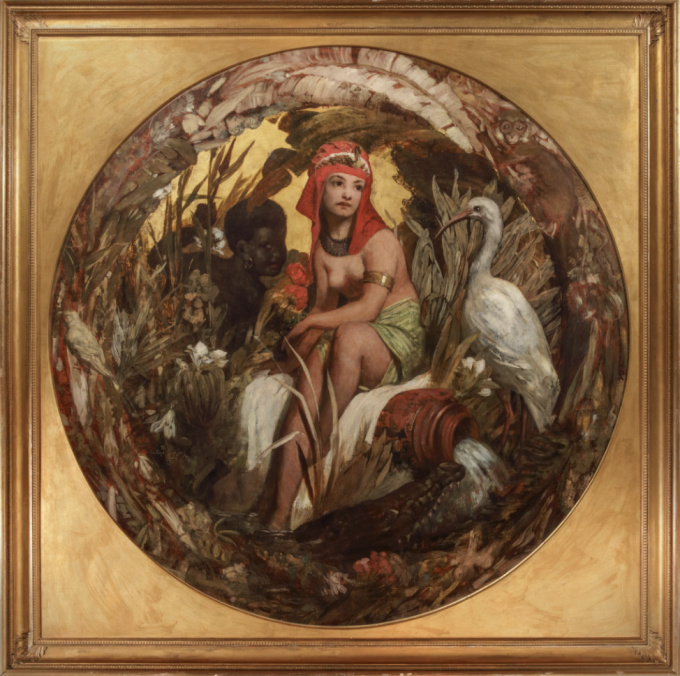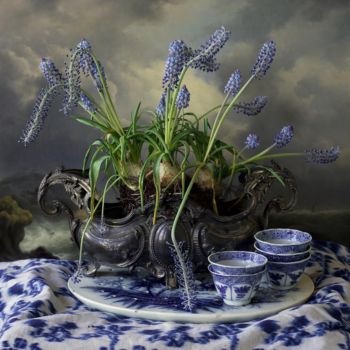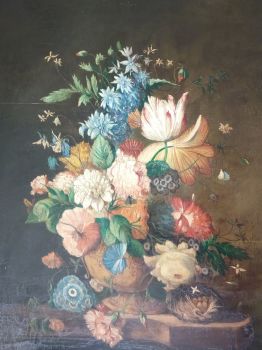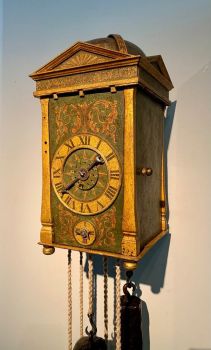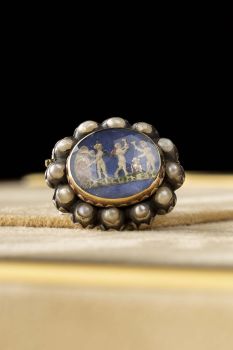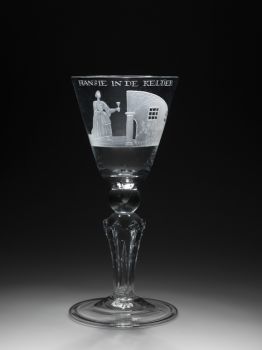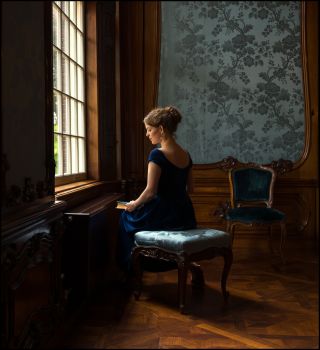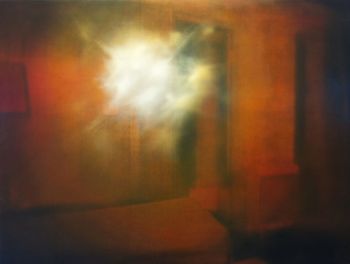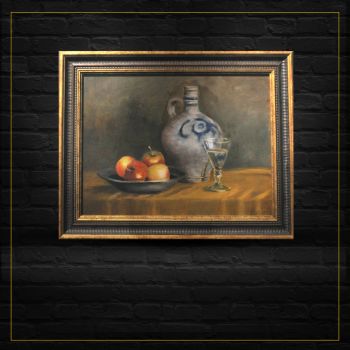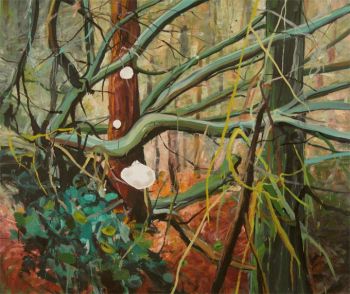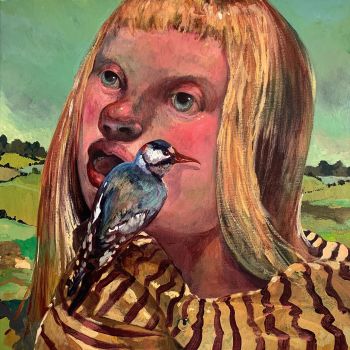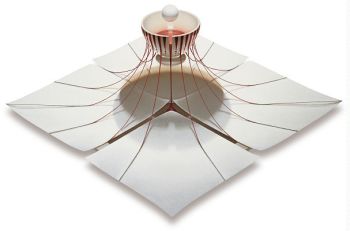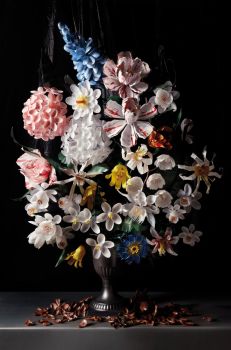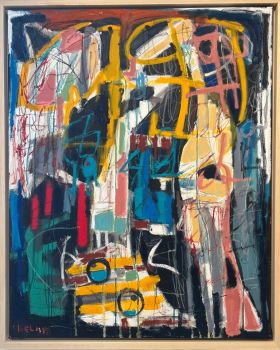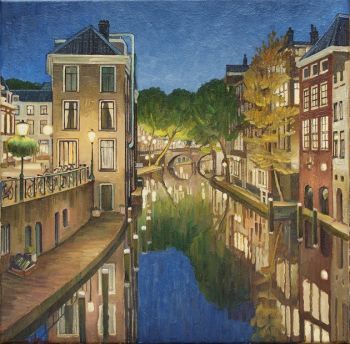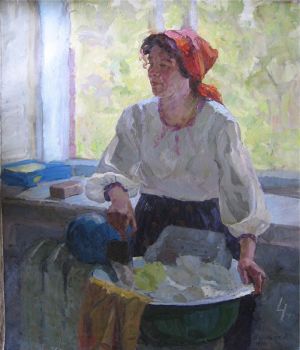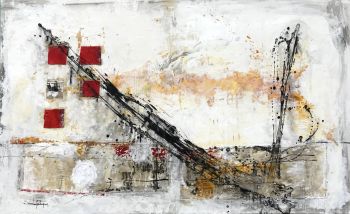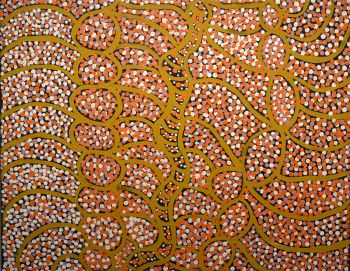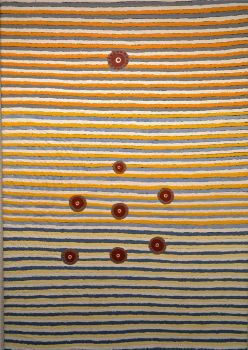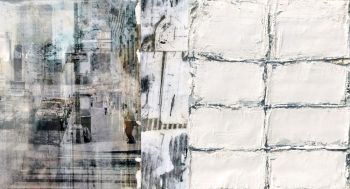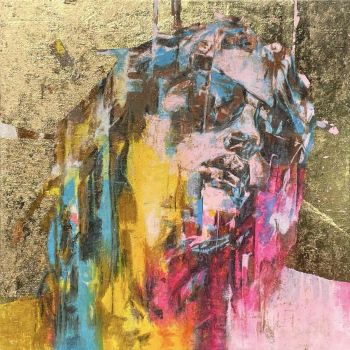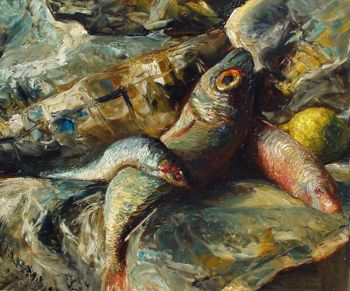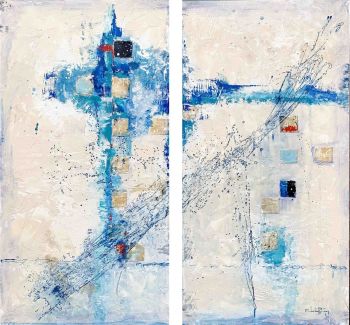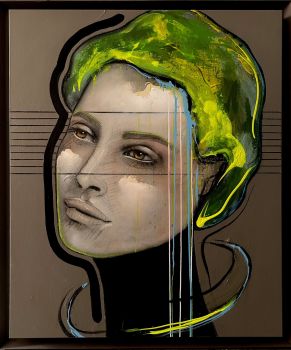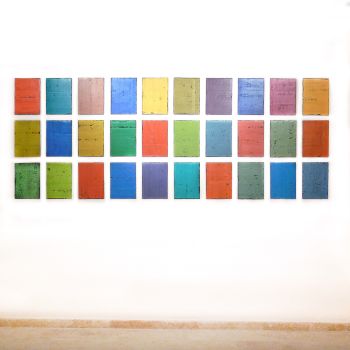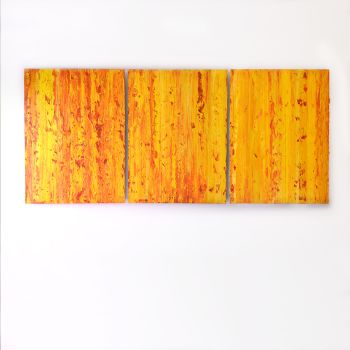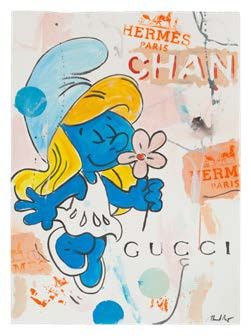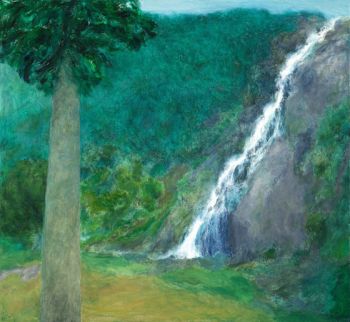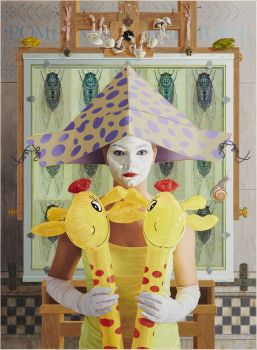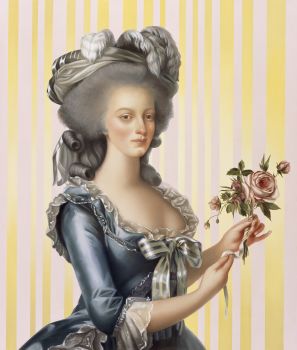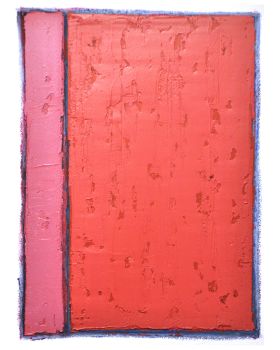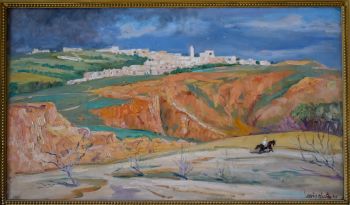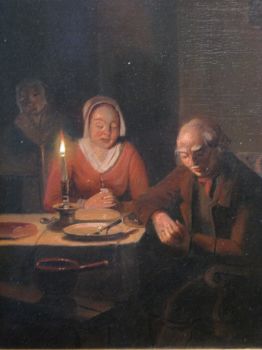‘Allegories of Africa and America’ 1872
Eduard Charlemont
ToilePeinture à l'huilePeindre
153 ⨯ 153 cm
Prix sur demande
Zebregs & Röell - Fine Art - Antiques
- Sur l'oeuvre d'artAllegory of Africa, signed and dated Ed. Charlemont 1872 lower left
Oil on canvas, H. 153 x W. 153 cm (each tondo)
Eduard Charlemont (1848, Vienna) was a distinguished painter. He was born in an artistic family. His father Matthias Adolf Charlemont (1820-1871) was a well-known miniature painter, his brother Hugo Charlemont (1850-1939) an impressionist landscape painter and brother Theodor Charlemont (1859-1938) a sculptor. Eduard Charlemont made name for himself only at the age of fifteen when he exhibited his works for the first time at the Academy of Fine Arts in Vienna, where he also studied. He exhibited for the first time at the Paris Salon in 1878, where he won his first prize. Charlemont was called into Hans Makarts (1840-1884) studio, who by that time was a leading figure in the artworld of Vienna and an artist luminary of the Vienna Ringstrasse era.
Charlemont developed a new and unique style based on the ‘Neo-Baroque’ style of Makart, a crossing from 16th century Venetian paintings and French Rococo painters from the 18th century. His penchant for idyllic, playful compositions, characterized by elegance, showed up as a recurring constant in the artist’s oeuvre. This style is also expressed in the tondi presented here.
The first work shows the decorative allegory of the continent Africa with its respective flora and fauna. The central female figure is arranged in an illusionistic, dreamy ideal space that functions as a projection surface for the Western fantasies that were prevalent at that time. It is a symbolic representation.
The second work, the ‘Allegory of America' stands as a testament to his enduring fascination with cultures beyond the boundaries of Europe. Within this canvas, Charlemont skillfully captures a tableau of individuals and scenes that serve as representatives of various facets of American culture. The composition is rich with symbolism, including the presence of an indigenous figure adorned with a resplendent headdress, a nod to the diverse native cultures of the Americas. Colonial influences are also discernible, as evidenced by the woman's fan, evoking echoes of European presence. Exotic flora and avian motifs further underscore the allegorical portrayal, serving as emblems of the Americas' unique biodiversity.
These works demonstrate the romantic lens through which Europeans regarded people from the colonies. They also demonstrate his adeptness in weaving together various cultural elements into a cohesive narrative. The meticulous attention to detail and the nuanced interplay of light and color are characteristic of Charlemont's signature style, allowing viewers to immerse themselves in a representation of a different culture. The fascination with his two depictions of America and Africa lasted not only during the artist's lifetime, but also to this day. The tondi remained in the collection of the composer, impresario, and art connoisseur Andrew Lloyd Webber (born in 1948 London) until the 1990s. A similar work, but an allegory on Asia, caused a battle between bidders in a French auction in 2021, resulting in a record price for paintings by Charlemont.
Provenance:
Collection Andrew Lloyd-Webber, United Kingdom
Auction, Sotheby’s Billinghurst, 15 september 1999, lot 775
Private collection, Switzerland - Sur l'artiste
Eduard Charlemont est né à Vienne, capitale de l'Empire autrichien, en 1848. Son père, Matthias Adolf Charlemont, était également peintre, spécialisé dans la peinture de portraits miniatures.
Son jeune frère Hugo Charlemont (1850-1939) était un peintre impressionniste tout aussi célèbre. À l'âge de quinze ans, Charlemont expose pour la première fois ses œuvres à l'Académie des Beaux-Arts de Vienne, où il étudie les beaux-arts. Au même âge, Eduard Charlemont est également engagé dans une école de filles pour enseigner le dessin.
Après avoir été diplômé de l'Académie des Beaux-Arts de Vienne, Charlemont voyage dans de nombreux pays d'Europe centrale et s'installe finalement à Paris, où il réside pendant les trente années suivantes.
A Paris, il remporte à plusieurs reprises le premier prix du Salon de Paris, une exposition annuelle organisée par l'Académie française des Beaux-Arts (français : Académie des Beaux-Arts).
L'œuvre la plus célèbre de Charlemont est Le Gardien du Sérail, largement connu sous le nom de Le Chef maure, représentant un épéiste maure gardant un sérail (une partie d'une riche villa arabe typique, où les femmes restaient lorsque des étrangers entraient dans la maison).
En 1899, il remporte la médaille d'or à l'Exposition Universelle, une Exposition universelle organisée à Paris. Charlemont était également connu pour ses peintures murales. Il a peint trois des peintures murales du Burgtheater (le Théâtre national autrichien de Vienne et l'un des théâtres de langue allemande les plus importants au monde) totalisant une longueur d'environ 55 mètres.
Il mourut à Vienne en 1906.
Êtes-vous intéressé par l'achat de cette oeuvre?
Artwork details
Related artworks
Johannes van Dreght
Antique Dutch still life flowers in vase1740 - 1800
Prix sur demandeGallerease Selected
Artiste Inconnu
Een Gotische zuidelijke Nederlanden wandklok1580 - 1590
Prix sur demandeNico van den Assem restauratie
Artiste Inconnu
Verre à boire Cristallo façon de Venise1600 - 1650
Prix sur demandePeter Korf de Gidts - Antiquairs
1 - 4 / 24Otto van Rees
Het atelier van de kunstenaar in Parijs (1918)1918
Prix sur demandeKunsthandel Pygmalion
1 - 4 / 24Artiste Inconnu
A large wall map of Asia by Nicolas de Fer 1647 - 1720
Prix sur demandeZebregs & Röell - Fine Art - Antiques
1 - 4 / 16- 1 - 4 / 24
Artiste Inconnu
The Stamford Raffles Secretaires.1800 - 1813
Prix sur demandeZebregs & Röell - Fine Art - Antiques
1 - 4 / 12

